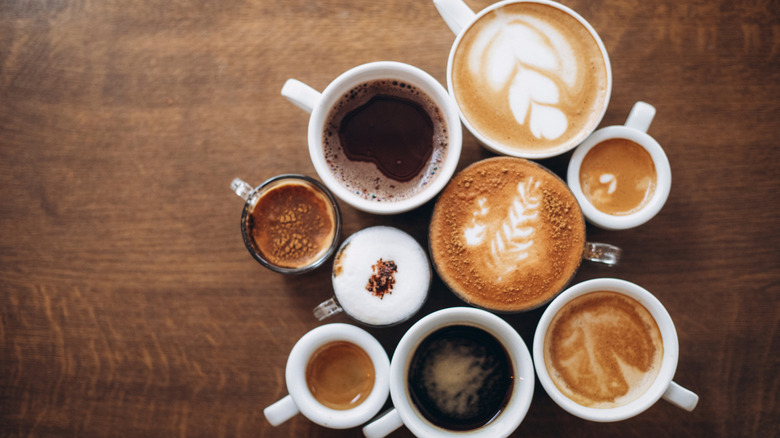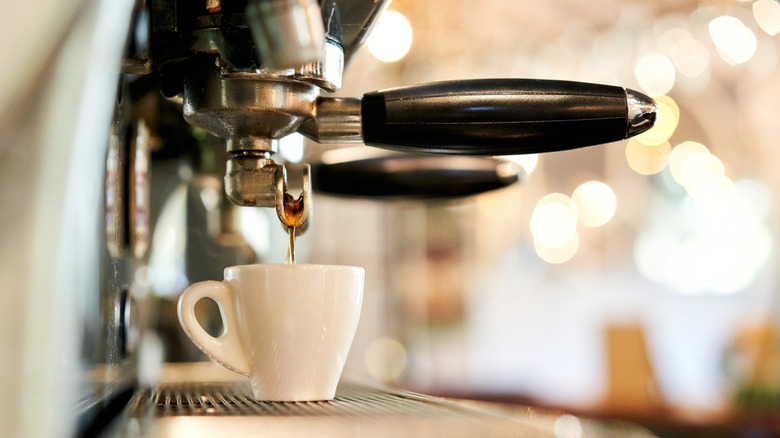Here's How Much Caffeine Is In A Regular Cup Of Coffee Vs. An Espresso Shot
We may receive a commission on purchases made from links.
If you've ever ordered a deliciously foamy macchiato or smooth flat white and realized you have no idea how much caffeine is in that beautiful espresso beverage, you're not alone. Luckily, estimating the caffeine content of an espresso-based drink — and how it compares to a regular old cup of Joe — doesn't have to be confusing.
Although espresso beans are a bit different than regular coffee beans, they come from the same origin and can be used interchangeably. When it comes down to it, espresso is simply a type of coffee that is brewed in a concentrated form using high pressure. The resulting rich, flavor-packed shots of deliciousness form the base of all the wonderful different espresso-based drinks we know and love.
Given that espresso is essentially concentrated coffee made with a higher ratio of coffee grounds to water, it's not surprising that espresso contains way more caffeine by volume than your average drip coffee. According to data from the USDA, 100 grams of espresso contains about 212 milligrams of caffeine, while the same amount of brewed coffee contains only 40 milligrams. But no one is drinking coffee cups filled with straight espresso (at least we hope not), so let's compare some more realistic serving sizes. A standard 1-ounce shot of espresso contains roughly 63 milligrams of caffeine. In contrast, an 8-ounce mug of brewed coffee contains around 96 milligrams of caffeine.
Does regular coffee contain more caffeine than espresso drinks?
When it comes to "regular" (non-espresso) coffee, serving sizes and brewing strength vary widely — a giant cup of diner-style coffee à la Lorelai Gilmore is a lot different than a tiny cup of weak hotel brew. However, on average one shot of espresso contains roughly two-thirds the caffeine of a regular cup of brewed coffee. Most standard espresso drinks are made with one or two 1-ounce shots, meaning they should contain between 60 and 130 milligrams of caffeine – not too different from your standard cup of Joe.
It's worth keeping in mind that espresso is a much more concentrated form of caffeine, so once you start getting into triple-shot and red-eye territory things can easily get much more potent. On the other hand, a large drip coffee is usually about 16 ounces, which works out to nearly 200 milligrams of caffeine or three espresso shots. Whether you prefer ordering creamy cortados at a café or coffee shop (there's a difference) or whipping up homemade lattes with an espresso machine like this CASABREWS espresso maker, espresso-based drinks generally contain less caffeine than a cup of drip coffee simply because the serving size is much smaller.

